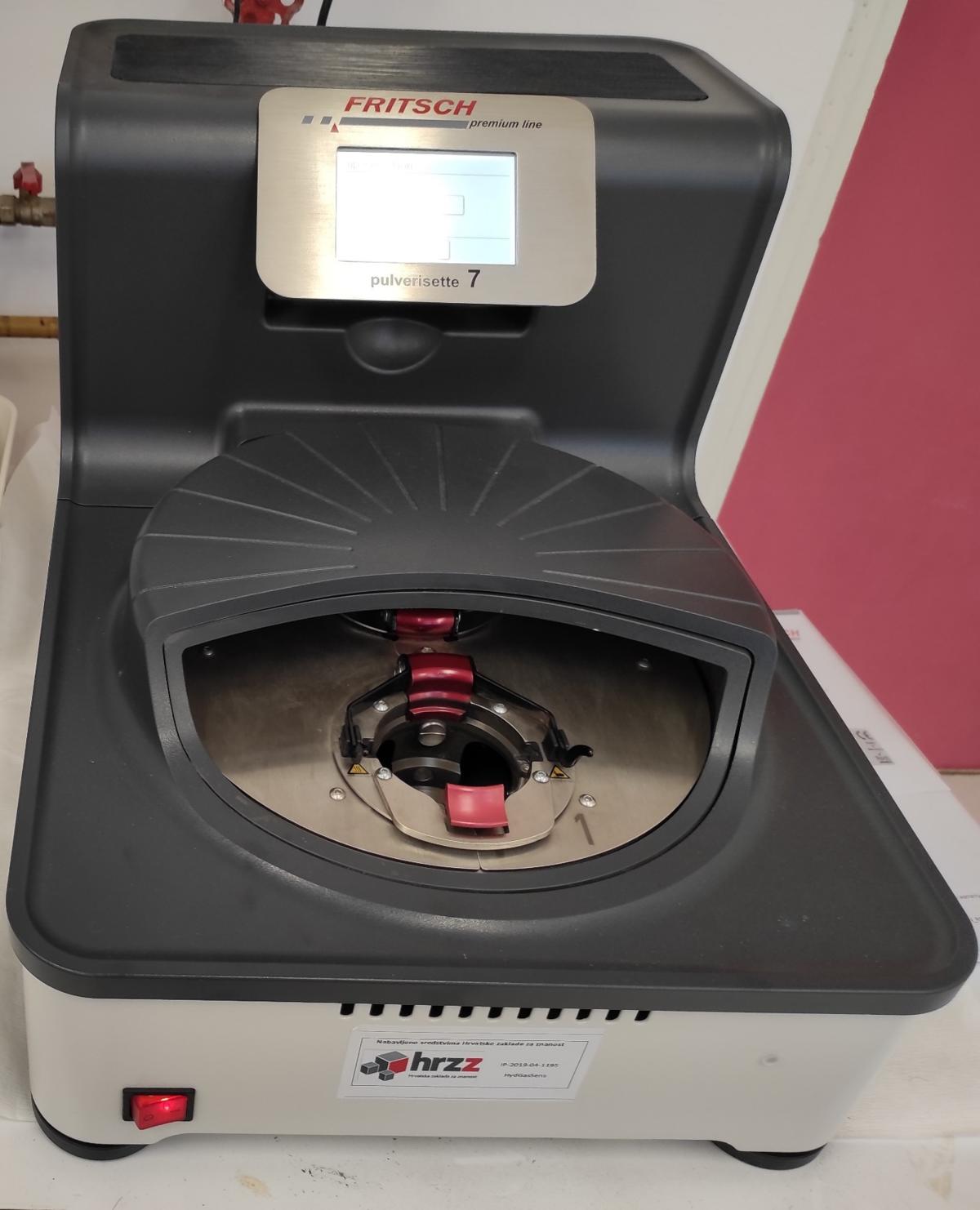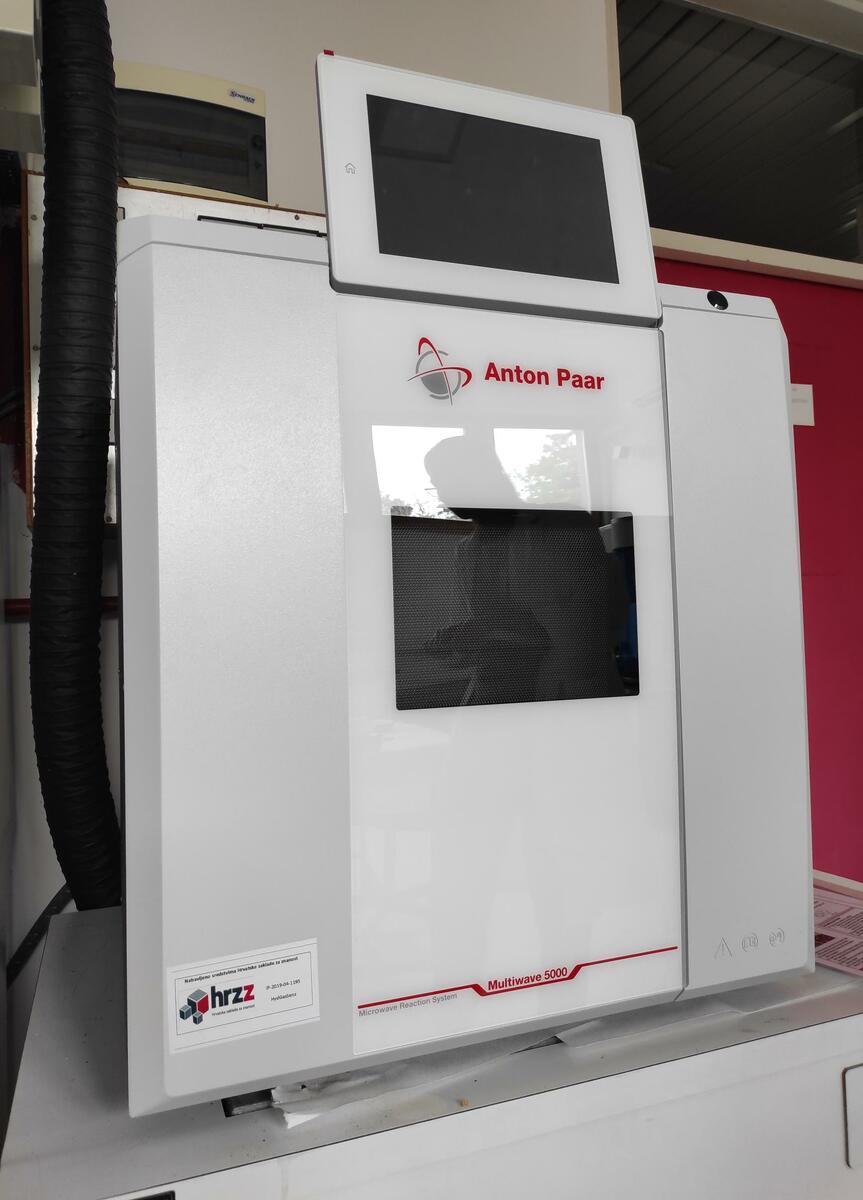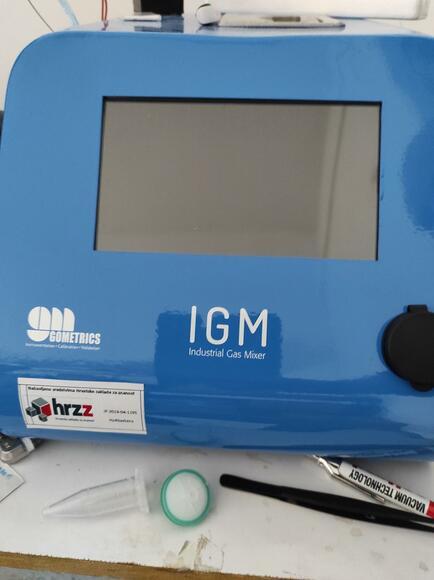The hydrogen gas monitoring is important in numerous applications such as in the semiconductor manufacturing, aerospace applications and metallurgical processes. Among the developed hydrogen sensors, those based on semiconducting metal oxides have attracted attention due to their relative high sensitivity, long lifetime and thermal stability. In this project the hydrogen gas sensing properties of pristine SnO2 and Fe2O3 as well as of Fe2xSn2-2xO4-x solid solutions will be studied. SnO2 doping with iron will cause changes in lattice parameters and bond length, number of oxygen vacancies, and will have an impact on the narrowing SnO2 band gap. It is expected that the formation of iron tin oxide solid solution (Fe2xSn2-2xO4-x) will decrease sensor operating temperature and will have beneficial effect on the synthesized sensors sensitivity. The selectivity to hydrogen will be improved by platinum (Pt) decoration on the surface of synthesized samples. In this project the microstructural properties of synthesized metal oxide supports will be optimised using divalent anhydrous iron(II) and tin(II) acetates. The divalent Fe(II) and Sn(II) metal cations will be oxidised and hydrolysed using water molecules generated “in situ” in the esterification reaction between acetate groups and ethanol. The decoration of Pt clusters on the synthesized Fe2O3, SnO2 and Fe2xSn2-2xO4-x supports will be optimised using Pt(II) acetylacetonate precursor. The same set of samples will be synthesized using ball-milling (solid state synthesis) and microwave assisted solvothermal synthesis (bottom-up wet chemistry approach). Using two different synthesis techniques will enable us to determine the optimal solid solution formulation for the highest Pt-catalyst dispersion in order to accomplish the best hydrogen gas sensing properties. This project may be the first step in the development and production of new gas sensor materials and in the construction of commercially available gas-sensing system.
-
Hydrogen gas sensing properties of mechanochemically dispersed platinum on -Fe2O3 support
Sensors and Actuators A: Physical 376 (2024) 115539.
https://doi.org/10.1016/j.sna.2024.115539
-
Marić, Ivan; Šoltić Monika; Dražić, Goran; A. van Spronsen, Matthijs*; Štefanić, Goran; Ivanda, Mile; Held, Georg; Jurkin, Tanja; Bohinc, Klemen; Gotić, Marijan*,
Synthesis of Pt decorated manganese oxide (MnO2/Mn5O8) nanorods and their catalytic activity for the reduction of 4-nitrophenol to 4-aminophenol,
Applied surface science, 649 (2024) 159091.
DOI: 10.1016/j.apsusc.2023.159091
-
Đurasović, Izabela; Štefanić, Goran; Dražić, Goran; Peter, Robert; Klencsár, Zoltán; Marcijuš, Marijan; Jurkin, Tanja; Ivanda, Mile; Stichleutner, Sándor; Gotić, Marijan*,
Microwave-assisted synthesis of Pt/SnO2 for the catalytic reduction of 4-nitrophenol to 4-aminophenol, Nanomaterials 13 (2023) 2481.
DOI: 10.3390/nano13172481
-
Marić, Ivan; Dražić, Goran; Radin, Edi; Peter, Robert; Škrabić, Marko; Jurkin, Tanja; Pustak, Anđela; Baran, Nikola; Mikac, Lara; Ivanda, Mile; Petravić, M.; Štefanić, Goran; Gotić; Marijan*,
Impact of platinum loading and dispersion on the catalytic activity of Pt/SnO2 and Pt/α-Fe2O3, Applied surface science, 607 (2023) 155073, 10.
DOI: 10.1016/j.apsusc.2022.155073
-
Radin, Edi; Štefanić, Goran; Dražić, Goran; Marić, Ivan; Jurkin, Tanja; Pustak, Anđela; Baran, Nikola; Raić, Matea; Gotić, Marijan*,
Solid-State Dispersions of Platinum in the SnO2 and Fe2O3 Nanomaterials, Nanomaterials 11 (2021) 12, 3349
DOI: 10.3390/nano11123349
-
Marijan Gotić had the poster presentation (and published abstract) on 9th International Conference on Material Science and Engineering, Rome, Italy, 11-12 April 2024.
Marijan Gotić, Monika Šoltić, Izabela Đurasović, Nikola Baran, Ivan Marić, Matthijs A. van Spronsen, Goran Dražić, Goran Štefanić, Rober Peter, Tanja Jurkin, Anđela Pustak, Lara Mikac, Georg Held, Mile Ivanda
Synthesis and Characterization of Platinum Nanoparticles on Reducible Metal Oxide Supports for Catalytic Applications and Hydrogen Sensing,
9th International Conference on Material Science and Engineering, Rome, Italy, 11-12 April 2024.- Abstract Book (link to book)
-
Monika Šoltić had oral presentation (and published abstract) on 30th Croatian-Slovenian Crystallographic Meeting, Veli Lošinj, Hrvatska, 12 -16 June 2024.
Šoltić, Monika; Baran, Nikola; Marić, Ivan; Štefanić, Goran; Marciuš, Marijan; Dražić, Goran; Peter, Robert; Jurkin, Tanja; Ivanda, Mile; Gotić, Marijan
Synthesis, characterization and gas sensing properties of platinum nanoparticles dispersed on iron oxide support,30th Croatian-Slovenian Crystallographic Meeting, Book of abstracts, pp 50
-
Monika Šoltić had poster presentation (and published abstract) on 7th Faculty of Science PhD Student Symposium, Zagreb, Croatia, 21-22 March 2023.
M. Šoltić, N. Baran, G. Dražić, G. Štefanić, M. Marciuš, M. Ivanda, M. Gotić, Synthesis and gas sensing properties of platinum nanoparticles supported on iron oxides, 7th Faculty of Science PhD Student Symposium: Book of abstracts / K. Pavlek (ed.), Zagreb, Croatia, Faculty of Science; University of Zagreb, 2023. Str. 125.
-
Izabela Đurasović had oral presentation (and published abstract) on 7th Faculty of Science PhD Student Symposium, Zagreb, Croatia, 21-22 March 2023.
I. Đurasović, G. Dražić, G. Štefanić, M. Marciuš, M. Ivanda, M. Gotić, Influence of Pt/SnO2 synthesis procedures on the catalytic reduction of 4-nitrophenol to 4-aminophenol, 7th Faculty of Science PhD Student Symposium: Book of abstracts / K. Pavlek (ed.), Zagreb, Croatia, Faculty of Science; University of Zagreb, 2023. str. 42.
-
Monika Šoltić had the poster presentation (and published abstract) on 28th Croatian Meeting of Chemists and Chemical Engineering with international participation, Rovinj, Croatia, 28-31 March 2023.
M. Šoltić, N. Baran, G. Dražić, G. Štefanić, M. Marciuš, M. Ivanda, M. Gotić, Synthesis and gas sensing properties of platinum nanoparticles dispersed on α-Fe2O3 and Fe3O4 supports, 28th Croatian Meeting of Chemists and Chemical Engineers; and 6th Symposium Vladimir Prelog: Book of abstracts / M. Rogošić (ed.), Rovinj, Croatia, Croatian Society of Chemical Engineers and Croatian Chemical Society, 2023. str. 129.
-
Izabela Đurasović had given lecture (and published abstract) on 28th Croatian Meeting of Chemists and Chemical Engineering with international participation; Rovinj, Croatia, 28-31 March 2023.
I. Đurasović, G. Dražić, G. Štefanić, M. Marciuš, M. Ivanda, M. Gotić, Influence of Pt/SnO2 synthesis procedures on the catalytic reduction of 4-nitrophenol to 4-aminophenol, 28th Croatian Meeting of Chemists and Chemical Engineers; and 6th Symposium Vladimir Prelog: Book of abstracts / M. Rogošić (ed.), Rovinj, Croatia, Croatian Society of Chemical Engineers and Croatian Chemical Society, 2023, str. 37.
-
Monika Šoltić had given lecture (and published abstract) on 29th Slovenian-Croatian Crystallographic Meeting, Topolšica, Slovenia, 14-18 June 2023.
M. Šoltić, N. Baran, G. Dražić, G. Štefanić, M. Marciuš, M. Ivanda, M. Gotić, Synthesis and gas sensing properties of platinum nanoparticles dispersed on α-Fe2O3 and Fe3O4 supports, 29th Slovenian-Croatian Crystallographic Meeting: Book of abstracts / A. Pevec, M. Počkaj (ed.), Topolšica, Slovenia, Slovenian Crystallographic Society and the Croatian Crystallographic Association, 2023. str. 61.
-
Izabela Đurasović had given lecture (and published abstract) on 29th Slovenian-Croatian Crystallographic Meeting, Topolšica, Slovenia, 14-18th June 2023.
I. Đurasović, G. Dražić, G. Štefanić, M. Marciuš, M. Ivanda, M. Gotić, Influence of Pt/SnO2 synthesis procedures on the catalytic reduction of 4-nitrophenol to 4-aminophenol, 29th Slovenian-Croatian Crystallographic Meeting: Book of abstracts / A. Pevec, M. Počkaj (ed.), Topolšica, Slovenia, Slovenian Crystallographic Society and the Croatian Crystallographic Association, 2023. str. 43.
-
Marijan Gotić had the poster presentation (and published abstract) on 5th International Conference on Applied Surface Science (ICASS2022), Palma de Mallorca, Spain, 25-28 April 2022.
Radin, Edi ; Baran, Nikola ; Dražić, Goran ; Jurkin, Tanja ; Ivanda, Mile; Štefanić, Goran ; Gotić, Marijan,
Solid state dispersions of platinum in the SnO2 nanomaterials,
5th International Conference on Applied Surface Science (ICASS2022) : Abstract Book / - Palma de Mallorca : Elsevier, 2022, P2.26-P2.26.
-
Edi Radin had the poster presentation (and published abstract) on 27th Croatian Meeting of Chemists and Chemical Engineering with international participation, Veli Lošinj, Croatia, 05-08 October 2021.
Radin, Edi ; Dražić, Goran ; Štefanić, Goran ; Pustak, Anđela ; Jurkin, Tanja ; Marić, Ivan ; Raić, Matea ; Baran, Nikola ; Gotić, Marijan
Mechanochemical synthesis and characterisation of Pt-Fe2O3 nanomaterials,
27HSKIKI - 27th Croatian Meeting of Chemists and Chemical Engineers - Book of Abstracts / Marković, Dean ; Meštrović, Ernest ; Namjesnik, Danijel et al. (ur.). Zagreb: Hrvatsko kemijsko društvo, 2021. str. 378-378.
-
Marijan Gotić had the poster presentation (and published abstract) on 27th Croatian Meeting of Chemists and Chemical Engineering with international participation, Veli Lošinj, Croatia, 05-08 October 2021.
Radin, Edi ; Dražić, Goran ; Štefanić, Goran ; Pustak, Anđela ; Jurkin, Tanja ; Marić, Ivan ; Raić, Matea ; Baran, Nikola ; Gotić, Marijan
Solid state dispersions of platinum in the SnO2 nanomaterials,
27th Croatian Meeting of Chemists and Chemical Engineers and 5th Symposium Vladimir Prelog : Book of Abstracts / Marković, Dean ; Meštrović, Ernest ; Namjesnik, Danijel et al. (ur.). Zagreb: Hrvatsko društvo kemijskih inženjera i tehnologa (HDKI), 2021. str. 377-377.





